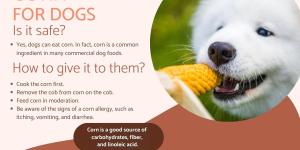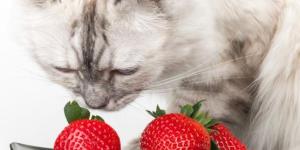What to Feed Your Betta Fish


Betta fish are colorful fish originally from Southeast Asia. Their vibrant colors and flowing fins have made them popular pets worldwide. While a clean tank is essential, a balanced diet is equally important for maintaining their vibrant appearance and overall health. Understanding their dietary needs is essential for keeping your pets happy and healthy.
In the following AnimalWised article, we discuss what to feed your betta fish, providing insights into the types of food they need and feeding practices that ensure their well-being.
Are betta fish herbivores or carnivores?
The betta fish, scientifically known as Betta splendens and commonly referred to as the Siamese fighting fish, is a tropical species renowned for its colors and delicate fins.
In the wild, bettas are carnivorous, feeding primarily on insects and insect larvae that fall into the water, as well as small crustaceans and other aquatic invertebrates. While they might nibble on plant matter occasionally, it's not a significant part of their diet and won't provide them with the necessary nutrients.
This protein-rich diet is crucial for their growth, development, and the maintenance of their colors. Many components of protein, such as amino acids, contribute to the production of pigments that give bettas their striking colors. A diet lacking in protein can result in duller coloration.

What do betta fish eat in nature?
Betta fish are native to Southeast Asian countries, particularly Thailand, Cambodia, Vietnam, and Laos. In these regions, their diet consists mainly of a variety of small prey available in their environment. They have evolved to be efficient hunters, preying on small aquatic creatures. Their diet typically consists of:
- Mosquito larvae: one of the primary food sources for bettas, mosquito larvae are abundant in stagnant water and provide a rich source of protein.
- Flies and other flying insects: bettas can catch insects that land on the water's surface, displaying a unique ability to jump slightly out of the water to capture them.
- Dragonfly larvae: these larvae are another key component of their diet, commonly found in shallow waters.
- Daphnia: Also known as water fleas, these small crustaceans offer excellent protein and fiber.
- Artemia (brine shrimp): although typically found in brackish environments, brine shrimp can be part of the betta diet when conditions are suitable.
- Shrimp and microcrustaceans: in some habitats, bettas consume small shrimp and other microcrustaceans.
- Earthworms and other small worms: bettas also eat aquatic worms and other small invertebrates found in the sediment or floating in the water.
- Fish eggs: occasionally, bettas may consume the eggs of other fish species, especially if they are unprotected and accessible.
- Plant matter (rarely): while bettas are predominantly carnivorous, they may occasionally ingest small amounts of plant matter or algae, though this is not a significant part of their diet.
Is your betta off its food? Find out what might be causing it and how to fix it.
What do betta fish eat in captivity?
In captivity, betta fish require a balanced diet that closely mimics their natural, protein-rich diet. While it's impossible to perfectly replicate a betta's natural diet, we can provide them with a nutritious and varied one in captivity. Proper nutrition is essential for their health, vitality, and longevity.
Commercial foods
- Exclusive pellets for bettas: these pellets are specifically designed for bettas and are among the most common and recommended options. They are high in protein, contain essential vitamins and minerals, are easy to store and dose, and are usually fortified to meet all the nutritional needs of a betta.
- Flakes for bettas: betta-specific flakes can also be a good source of nutrients. Ensure they are formulated for bettas to provide adequate protein content. They are easy to administer and can be an alternative or complementary option to pellets.
Live and frozen foods
- Mosquito larvae: a natural food source rich in protein, available in live or frozen form at specialized pet stores.
- Daphnia: also known as water fleas, these small crustaceans are a good source of protein and fiber, aiding in digestive health.
- Bloodworms: red mosquito larvae that are high in protein, available live, frozen, or freeze-dried.
- Artemia: also known as brine shrimp, these small crustaceans are very nutritious, rich in proteins and essential fatty acids, and available live, frozen, or freeze-dried.
Freeze-dried foods
Freeze-dried foods retain their nutritional value and are easy to store, making them an excellent option for feeding bettas. It is important to provide a varied diet to ensure that the betta receives all necessary nutrients.
To maintain optimal health, it is best to alternate between pellets, live and frozen foods, and freeze-dried foods. Avoid overfeeding, as it can lead to health problems such as obesity and bloating.
An appropriate diet also contributes to water quality in the aquarium. Uneaten food and excess waste can contaminate the water, so it is crucial to maintain a regular cleaning routine and perform regular water changes to ensure a healthy environment for your betta.
Expand your betta expertise with our article on differentiating male and female fish.

How much should I feed my betta fish per day?
Due to their small stomachs, it is recommended to feed them in moderation to avoid issues such as obesity and water contamination from excess waste.
It is generally recommended to feed betta fish twice a day. The appropriate portions will vary depending on the type of food. Here are the general guidelines:
- Pellets: the ideal amount is 2 to 4 pellets per meal. These should be soaked before feeding to prevent digestive issues.
- Flakes: pinch a small amount of flakes, just enough for your betta to consume within a few minutes.
- Live or frozen foods: Offer small portions of live or frozen foods like mosquito larvae, bloodworms, daphnia, or brine shrimp that the betta can consume within the 2-3 minute timeframe.
- Freeze-dried foods: Freeze-dried options like bloodworms and brine shrimp are valid choices but should be rehydrated before being offered to the fish. Use sparingly, as it can cause bloating.
Additionally, consider implementing one fasting day per week. This practice can help cleanse the fish's digestive system and promote long-term health.
How do I know if I'm feeding my betta enough?
Observe your betta's behavior during feeding to adjust the amount as necessary. If the fish quickly eats all the food and seems to search for more, you may need to increase the amount slightly.
If there is uneaten food left after 2-3 minutes, reduce the amount in the next feeding to prevent waste and maintain water quality in the aquarium.
Is your betta puffing up frequently? Find out what it means and why it happens in this other article.
If you want to read similar articles to What to Feed Your Betta Fish, we recommend you visit our Homemade diets category.
- Avila Sandoval, JE, & Moreno Tarazona, DY (2015). Replacement of brine shrimp with balanced food in betta splendens larvae .
- Lujan, M. (sf). Betta Fish: Care, Feeding and Reproduction .
- Obregón, DAA (2006). Breeding and production of Betta (Betta splendens) for non-professional aquarists . REDVET. Electronic Journal of Veterinary Medicine, 7(4), 1-4.
- Puello‐Cruz, AC, Velasco‐Blanco, G., Martínez‐Rodríguez, IE, Felix‐Ramos, E., & Voltolina, D. (2010). Growth and survival of Siamese fighting fish, Betta splendens, larvae at low salinity and with different diets . Journal of the World Aquaculture Society, 41(5), 823-828.
- Valencia, GAT (2016). Larviculture of Betta splendens using Brachionus calyciflorus rotifers and infusoria as a food source . Orinoquia, 20(2 Sup), 71-77.







